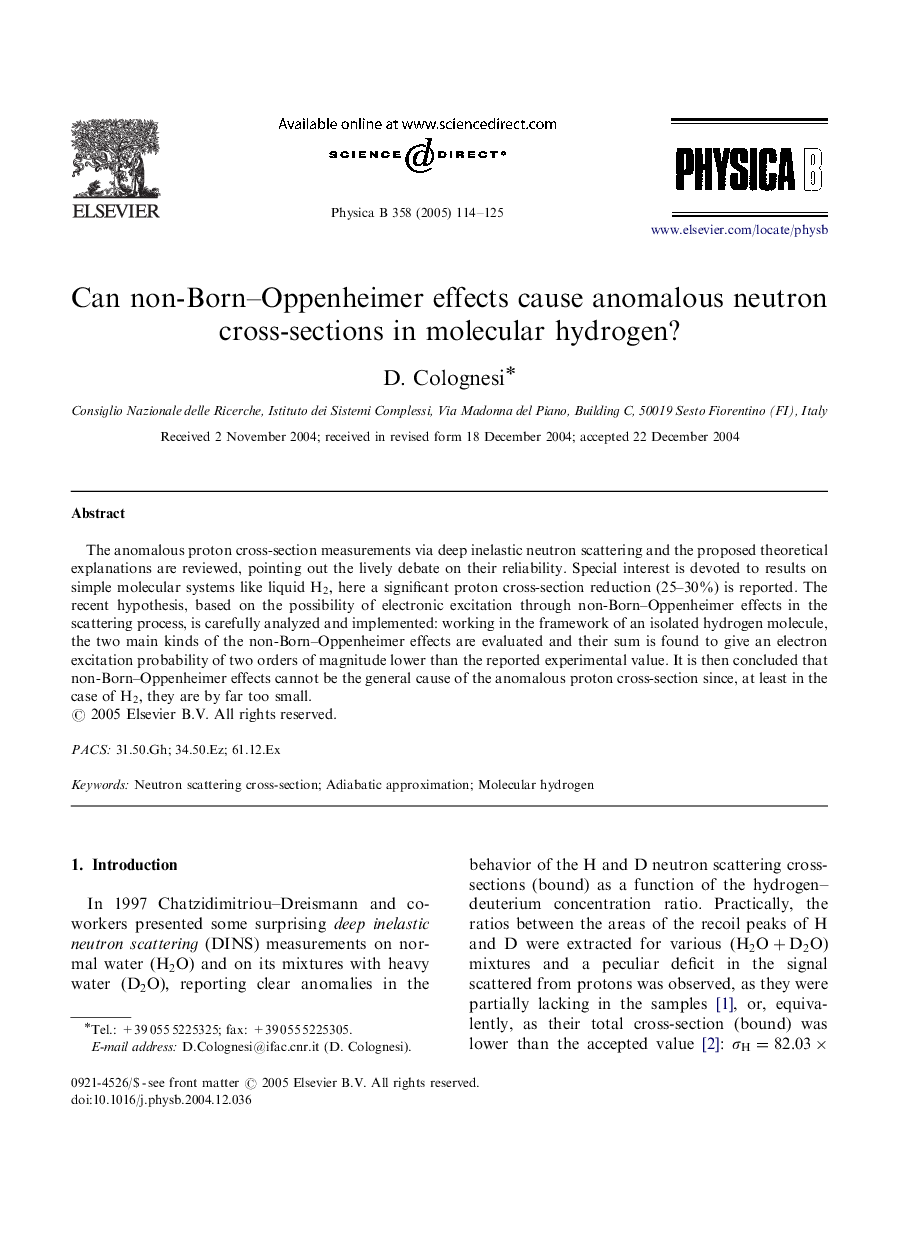| Article ID | Journal | Published Year | Pages | File Type |
|---|---|---|---|---|
| 9837769 | Physica B: Condensed Matter | 2005 | 12 Pages |
Abstract
The anomalous proton cross-section measurements via deep inelastic neutron scattering and the proposed theoretical explanations are reviewed, pointing out the lively debate on their reliability. Special interest is devoted to results on simple molecular systems like liquid H2, here a significant proton cross-section reduction (25-30%) is reported. The recent hypothesis, based on the possibility of electronic excitation through non-Born-Oppenheimer effects in the scattering process, is carefully analyzed and implemented: working in the framework of an isolated hydrogen molecule, the two main kinds of the non-Born-Oppenheimer effects are evaluated and their sum is found to give an electron excitation probability of two orders of magnitude lower than the reported experimental value. It is then concluded that non-Born-Oppenheimer effects cannot be the general cause of the anomalous proton cross-section since, at least in the case of H2, they are by far too small.
Related Topics
Physical Sciences and Engineering
Physics and Astronomy
Condensed Matter Physics
Authors
D. Colognesi,
